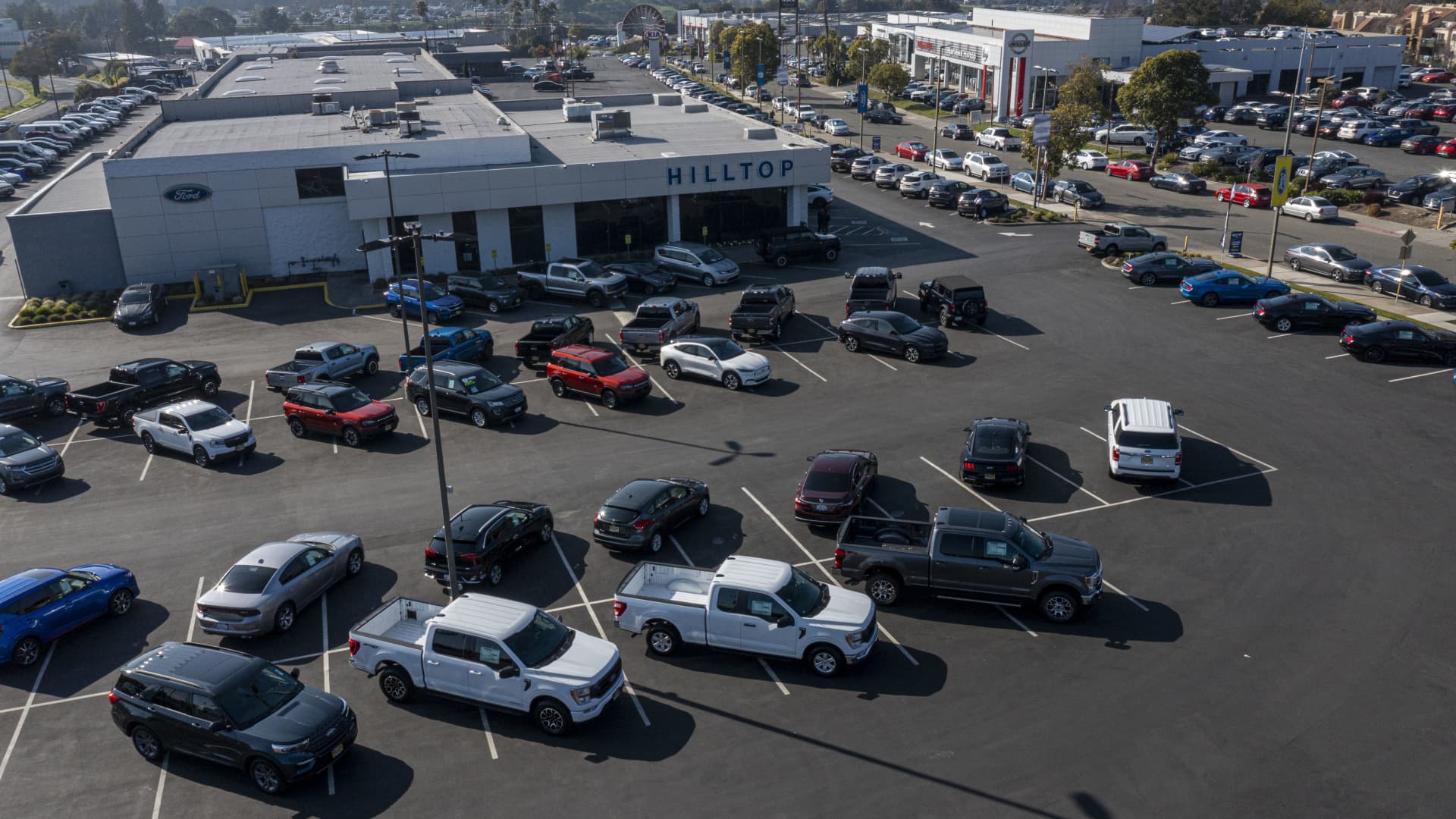One of the best car-shopping weekends pre-pandemic is more of a dud these days.
Amid the auto industry’s manufacturing challenges due to persisting supply-chain issues, Memorial Day sales are generally minimal to nonexistent this year.
“It’s looking pretty bleak, to be straightforward about it,” said Ivan Drury, senior manager of insights for Edmunds. “It’s getting harder and harder for people to get a new car with the features they want at the price they’re willing to pay.”
The average amount paid for new car is more than $45,200, up 18.7% from a year ago, according to a joint forecast from J.D. Power and LMC Automotive. Buyers are paying about $700 above sticker price on average, Drury said.
At the same time, the average incentive offered by dealers has dropped to an all-time low of $1,034, compared with $2,996 a year ago, the J.D. Power/LMC forecast shows. Generally speaking, dealers don’t need to offer much in the way of incentives to sell cars these days.
In fact, despite the pace of sales being down 23.8% from a year ago due to reduced inventory, the average per-car profit at dealerships is $5,046 up from $2,733 a year ago.
It’s getting harder and harder for people to get a new car with the features they want at the price they’re willing to pay.Ivan DrurySenior manager of insights at Edmunds
“This elevated per-unit profit level is more than offsetting the drop in sales volume,” said Thomas King, president of J.D. Power’s data and analytics division, in the forecast.
Meanwhile, facing limited inventory for a new vehicle, a growing share of buyers are heading to used-car lots instead, Drury said.
“A lot of new cars you see on [dealer] websites that are labeled ‘coming soon’ or ‘in transit’ are already sold,” Drury said. “So unless you can pre-order that vehicle and wait three or six months for it, you’re going to end up in a used car.”
More from Personal Finance:
Here are ways to tap into your home’s increased equity
There’s an ‘unretirement’ trend in this hot job market
How to beat back rising prices with Memorial Day deals
Of buyers with a trade-in, 45% are ending up with a pre-owned vehicle compared with 35% a year ago, Drury said.
Of course, there’s little relief in the used car market. Average prices are up 22.7% over the last 12 months, according to the latest data from the Bureau of Labor Statistics. Transaction amounts average $29,948, Edmunds research shows.
However, this means trade-in values are higher, as well.
“For your own used vehicle, get multiple quotes,” Drury said. “Leverage that.”
Another thing to consider is the cost of financing. The average rate paid on new car loans is ticking upward. It reached 4.7% in April, up from 4.5% in March and 4.1% in December, according to Edmunds. With the Federal Reserve expected to continue raising a key interest rate that affects consumer loans, car shoppers are likely to run into higher rates in the coming months.
However, well-qualified buyers may be able to snag a decent rate, depending on the car.
“You can still get zero or maybe 1.9% financing,” Drury said.
For used cars, the average rate is 8%. However, for certified pre-owned vehicles — which generally have passed a rigorous inspection and come with an extended warranty — you may find special financing deals.
“It could be 1.9% or 2.9% or even cash back,” Drury said.
And while those used cars may cost more, you could pay a higher interest rate on a loan for a non-certified version.
“Even if you save money upfront with a non-certified pre-owned car, you might end up paying more overall,” Drury said.
